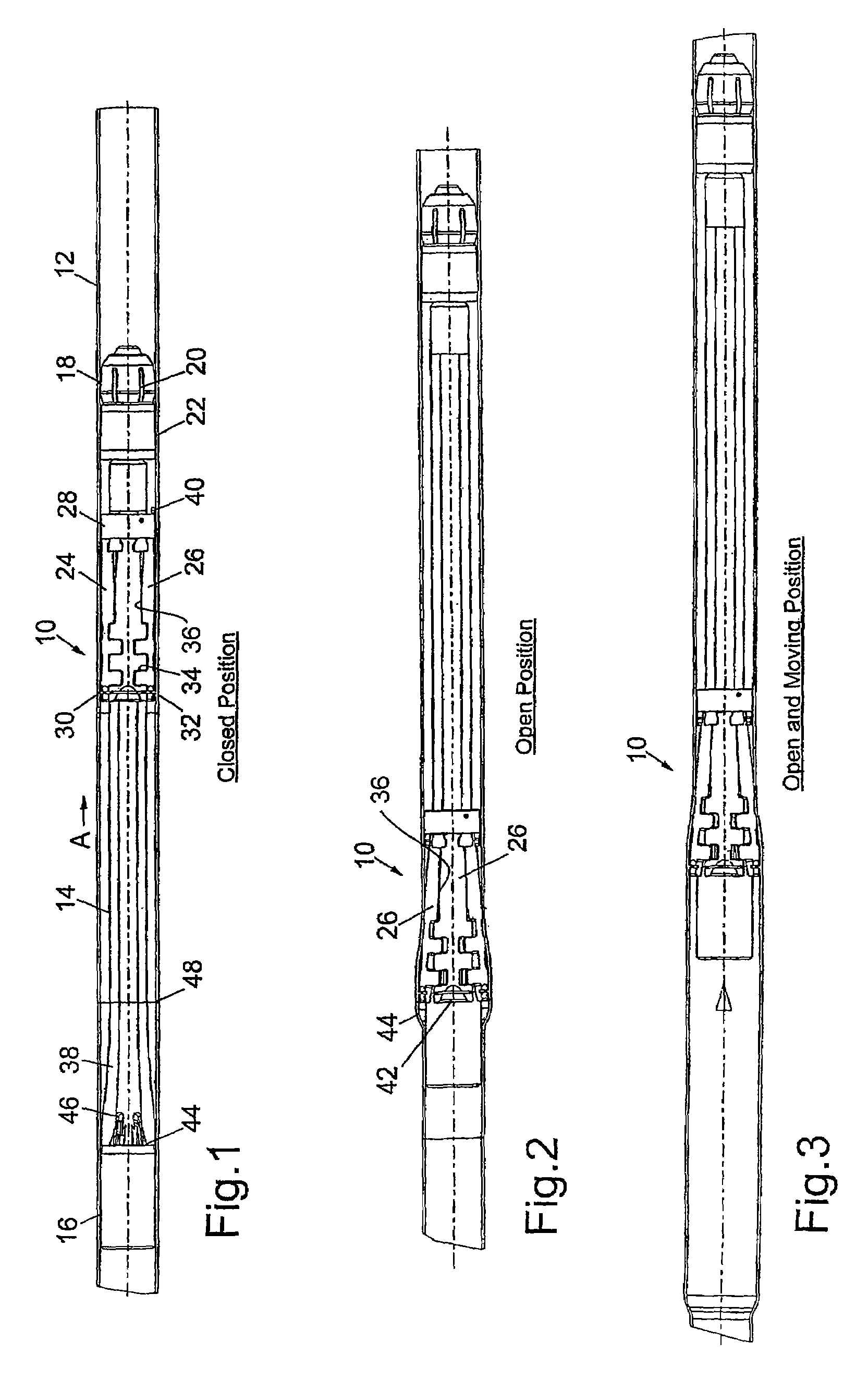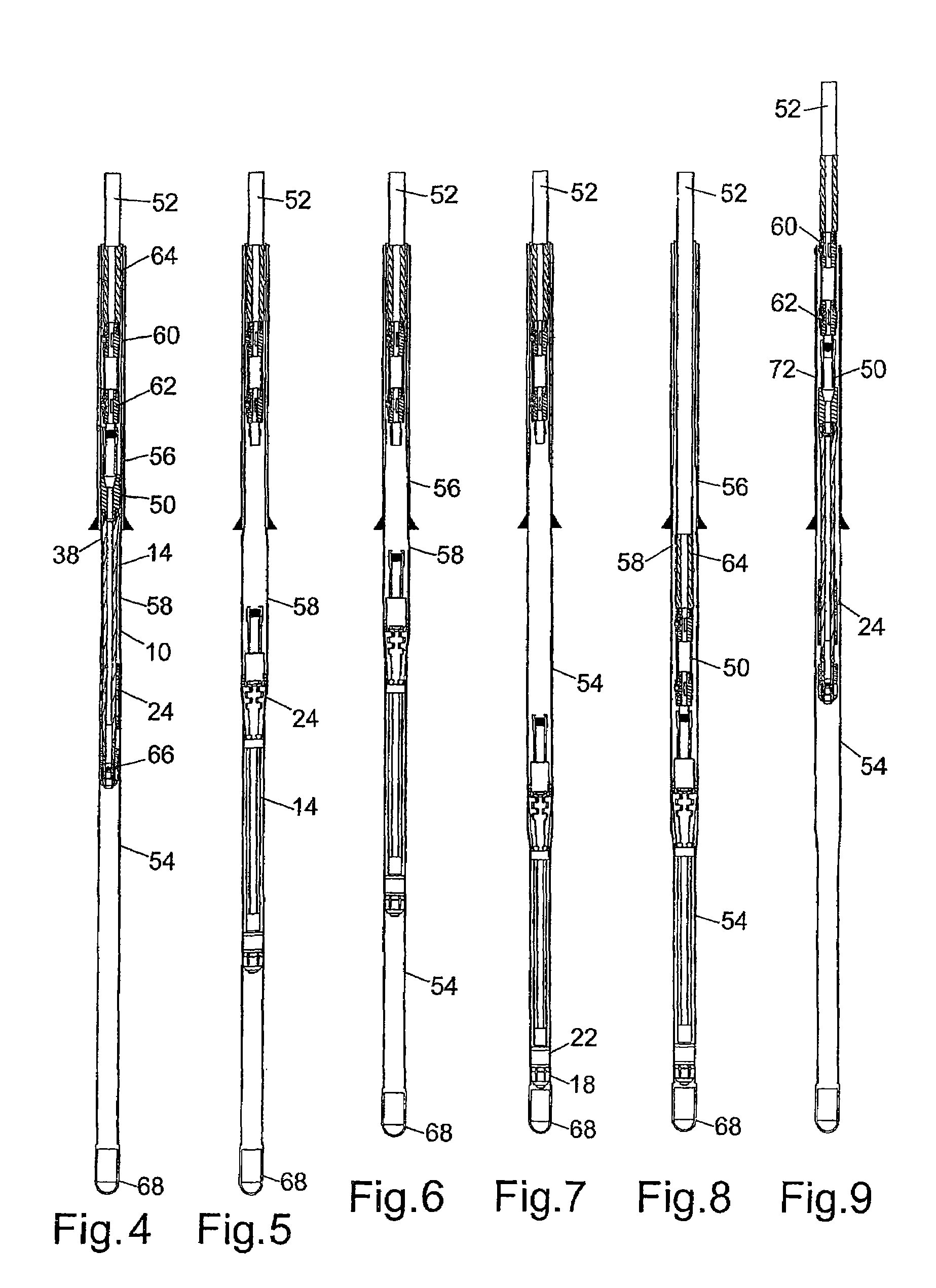Tubing expansion
a technology of tubing and expansion tube, which is applied in the direction of fluid removal, earthwork drilling and mining, borehole/well accessories, etc., can solve the problems of reducing the service life of the seal, and reducing the difficulty of achieving satisfactory results. , to achieve the effect of extending the seal life, avoiding the loss of sealing function, and facilitating the formation of seal
- Summary
- Abstract
- Description
- Claims
- Application Information
AI Technical Summary
Benefits of technology
Problems solved by technology
Method used
Image
Examples
Embodiment Construction
[0033]Reference is first made to FIG. 1 of the drawings, which illustrates a tubing expansion tool 10 in accordance with a preferred embodiment of one aspect of the present invention. The tool 10 is shown in a closed first configuration in FIG. 1, while FIGS. 2 and 3 of the drawings show the tool 10 in an open second configuration, and being used to expand a section of downhole tubing 12. Following a description of the tool 10, with reference to FIGS. 1, 2 and 3, the use of the tool 10 in a tubing expansion operation will be described with reference to FIGS. 4 to 9 of the drawings.
[0034]The tool 10 comprises a mandrel 14 having a connector 16 at one end to allow the tool 10 to be releasably mounted at the lower end of a tool string. As will be described, the connector 16 incorporates an internal fishing profile, to allow retrieval of the tool 10 following a tubing expansion operation.
[0035]Mounted to the lower or leading end of the mandrel 14 is a compliant expansion cone 18. The co...
PUM
| Property | Measurement | Unit |
|---|---|---|
| diameter | aaaaa | aaaaa |
| radius of curvature | aaaaa | aaaaa |
| circumference | aaaaa | aaaaa |
Abstract
Description
Claims
Application Information
 Login to View More
Login to View More - R&D
- Intellectual Property
- Life Sciences
- Materials
- Tech Scout
- Unparalleled Data Quality
- Higher Quality Content
- 60% Fewer Hallucinations
Browse by: Latest US Patents, China's latest patents, Technical Efficacy Thesaurus, Application Domain, Technology Topic, Popular Technical Reports.
© 2025 PatSnap. All rights reserved.Legal|Privacy policy|Modern Slavery Act Transparency Statement|Sitemap|About US| Contact US: help@patsnap.com



